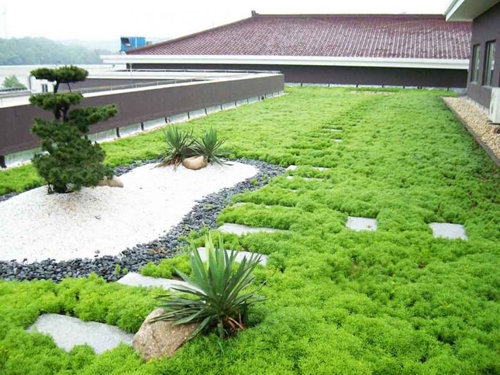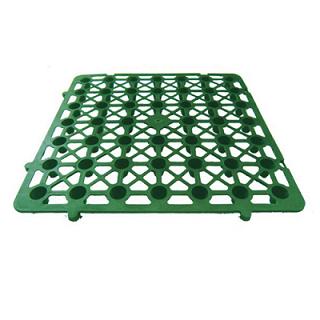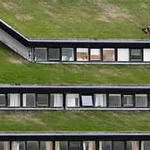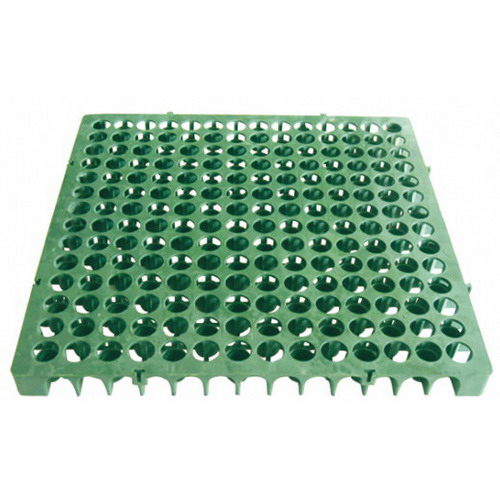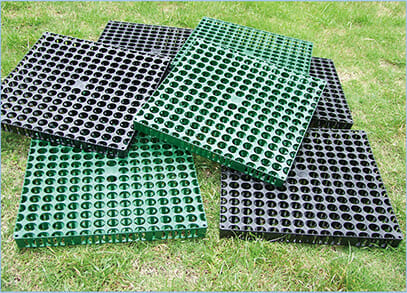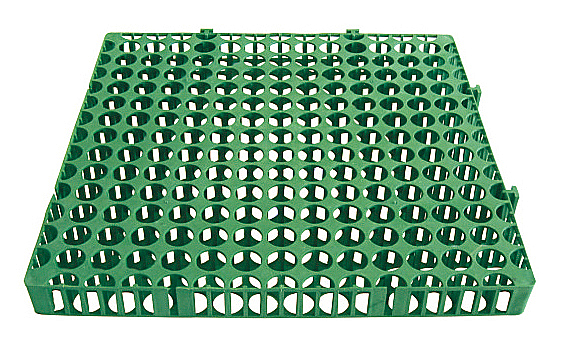Why Is Drainage Board Useful for Your Life?
DESCRIPTION: Green roof systems of this type are drained by waffled plastic sheets called “drainage plates”. Water is retained within pockets on the upper sides of the drainage plates; excess water spills over the edges of the plates and is carried off the roof. The plastic storage and drainage plates are made from HDPE(high-density polyethylene), using high pressure to inject plastic to form hole-lump-shaped shell, with stereo space and support level; in the top of the shell, covering with non-woven as filtering level for water percolation, water storage and water drainage. The plastic storage and drainage plate also named water drainage protection plate or water filtration plate or plastic inter layer board.
APPLICATION: Since drainage plate is lightweight and easy to install, they have become the most popular drainage system for green roofs. Drainage plates are recommended for various areas:
1. Landscape Engineering: garage, roof garden, football field, golf course and baths.
2. Municipal Engineering: subgrade, subway, tunnel and landfill.
3. Constructional Engineering: building foundation, Basement wall.
4. Traffic Engineering: subgrade of highway, railway and slope.
COMPONENTS: A synthetic protection/water-storage fabric weighing 500g/m2 (15 oz/yd2) is applied over the waterproofing or root-barrier membrane. Drainage board is laid over the fabric with the joints staggered. Three thicknesses of drainage plates are available to meet the drainage and water storage requirements of almost any green roof: 25 mm (1” thickness) is standard for thin extensive roofs, 40 mm (1.5”) is recommended for enhanced water storage and drainage on thicker extensive roofs and semi-intensive roofs, and 60 mm (2.5”) is available for maximum water retention on intensive roofs. A 200g/m2 (6 oz/yd2) separation fabric is applied over the drainage plates and soil is spread over the fabric. See the following pages for installation details.
The top surface of the roof drain system is perforated to allow excess water to pass through and drain away. A non-woven polypropylene filter fleece is bonded to the upper surface to speed up installation, and is used to prevent the green roof substrate from blocking the drainage voids in the drainage board. The edge of the geotextile extends beyond the core by 100 mm along one edge to allow the creation of overlaps in the filtration layer.
More information about drainage board, please visit www.greening-solution.com now!


